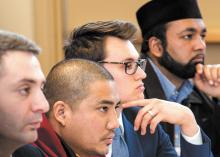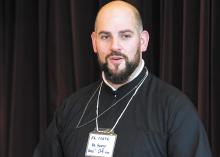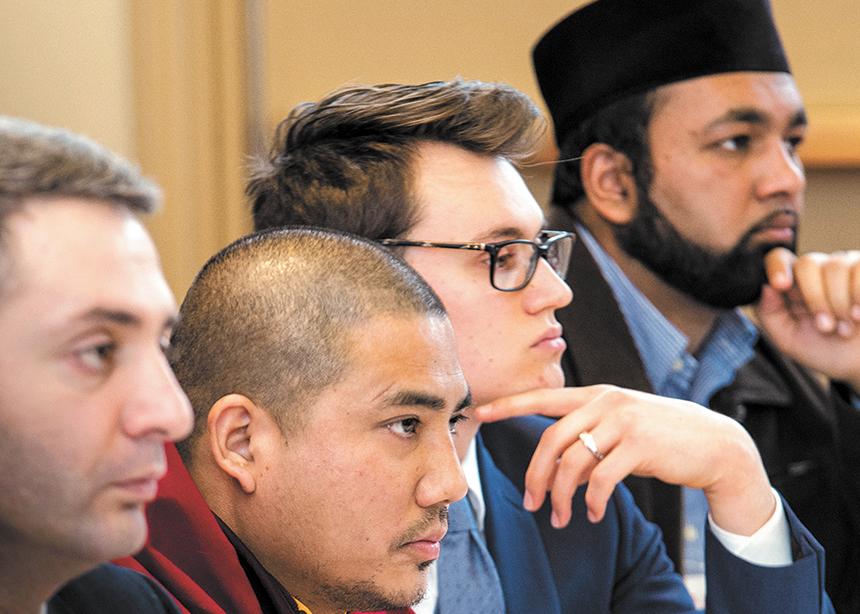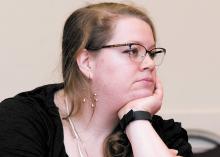This past March, I participated in an interfaith dialogue for young people in Vancouver, hosted by the Armenian Diocese of Canada.
The week-long event, entitled Celebrating Our Diversity Now, was a time of sharing between different religious and cultural groups. Every day, a small gathering of young adults and clergy sat around a table engaging each other and breaking bread together. The faith communities were each given a chance to offer what they thought people should understand about their faith and practices, and to answer questions from the other communities.
Prior to this event, similar dialogues happened in Montreal, Toronto and Calgary. In Vancouver, the faith communities present around the table included Orthodox Christian, Anglican, Catholic, Buddhist, Sikh, Baha’i, Mormon, Islam, Hare Krishna and several others.
Mornings were dedicated to teaching sessions. In the afternoon, clergy sat on a panel and laypeople asked them questions. This was a unique opportunity, and questions were asked that would usually make people uncomfortable. People asked about Islamophobia, open and closed communion, holy books, gender and sexuality, community growth, and life after death. Despite these potentially volatile topics, people mostly asked questions with a spirit of humility, and people mostly responded with a spirit of generosity.
I saw this both as a participant and a presenter. Together with Tim Kuepfer, pastor of Chinatown Peace Church in Vancouver, I made a presentation about what it means to be Anabaptist.
I shared about the early Anabaptists splitting from the Catholic Church and choosing not to follow Martin Luther. This was my first time speaking on Anabaptist beliefs to a group of people who were not themselves Anabaptists. I had to sift through everything I wanted to say and pick out the essentials. I touched on adult baptism, communion, anticlericalism, pacifism and martyrdom.
Tim spoke on what it means to be Anabaptist today. He talked about what it looked like for him to grow up Amish-Mennonite, showing pictures of how his wife’s head coverings changed the longer she was away from the Amish-Mennonite community, until she made the choice to remove it altogether. He also spoke about where in the world Mennonite populations are growing most, and how we, as a diverse group of people, practise our faith today.
I was amazed at how open people were to talking about difficult topics. People acknowledged their own ignorance about each other and asked the different communities to correct their beliefs.
Throughout the conversations many people talked about similarities between different faith groups, and how that could lead to collaborations. Two of the key similarities were experiences of oppression and a desire for peace.
The Armenian Orthodox participants talked about the Armenian genocide, the Muslims talked about Islamophobia today, the Baha’i representative talked about religious oppression in Iran, and I talked about religious oppression of Anabaptists. Most communities had very strong connections to religious discrimination. Expressing that brought many of us to a deeper understanding of each other.
Every community expressed a desire for peace, many describing what we would understand as shalom. While not all groups considered themselves pacifists, each group expressed a desire to live together in harmony. I don’t simply mean co-existing, but interacting with and learning from each other.
The purpose of Celebrating Our Diversity Now was two-fold: for faith communities to come together and share with each other, and to begin talks about having a national interfaith group for young people in Canada. This ambitious goal is just in the beginning stages, but the opportunity to engage with young adults across Canada on issues such as freedom of religion and social justice is certainly intriguing.
Dialogues are one way to engage with the world around us in a meaningful way. This type of engagement prevents us from viewing people who think and believe differently as “other.” It was great to have an intentional and safe space to share and learn about religious diversity in Canada. It showed me that there are many young people who desire to have conversations about faith and religious practices. All that’s needed is a forum.
While this initiative is in its infancy, it is worth keeping an eye on. It has potential to bring together people who would otherwise have never known each other. It’s a great place for young people to share with and learn from each other about the diversity in our country, and how that can be a blessing if we choose to work together for the common good.
Annika Krause, 30, is a member of Sherbrooke Mennonite Church in Vancouver.

Representatives from a variety of faiths gathered in Vancouver in March for Celebrating Our Diversity Now, an interfaith dialogue. (Armenian Diocese of Canada photo)

Celebrating Our Diversity Now was a time of sharing between different religious and cultural groups. (Armenian Diocese of Canada photo)

Constantinos Economos, parish priest at St. George Greek Orthodox Cathedral in Vancouver, speaks at Celebrating Our Diversity Now. (Armenian Diocese of Canada photo)




Add new comment
Canadian Mennonite invites comments and encourages constructive discussion about our content. Actual full names (first and last) are required. Comments are moderated and may be edited. They will not appear online until approved and will be posted during business hours. Some comments may be reproduced in print.